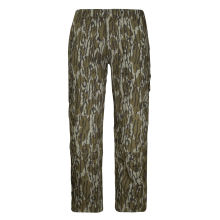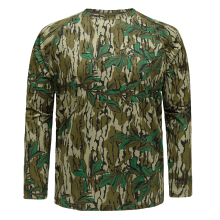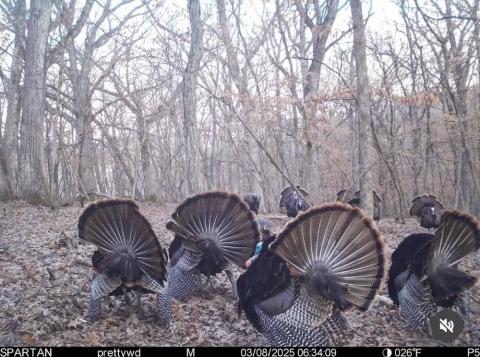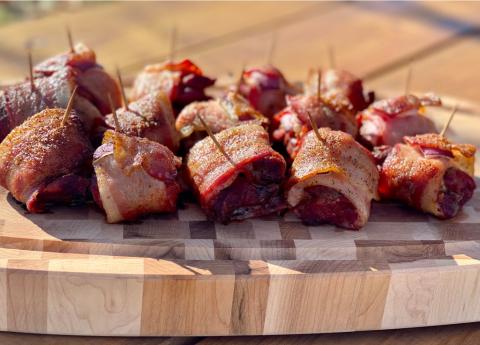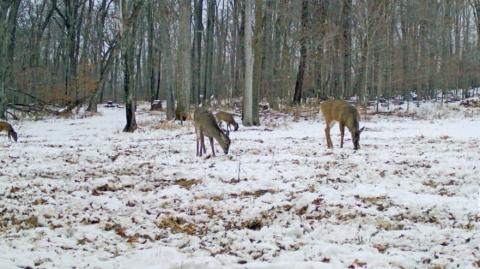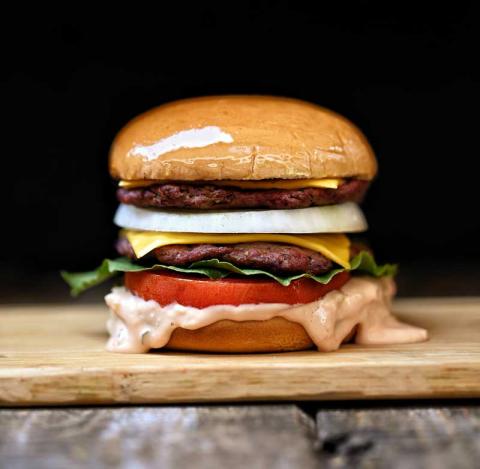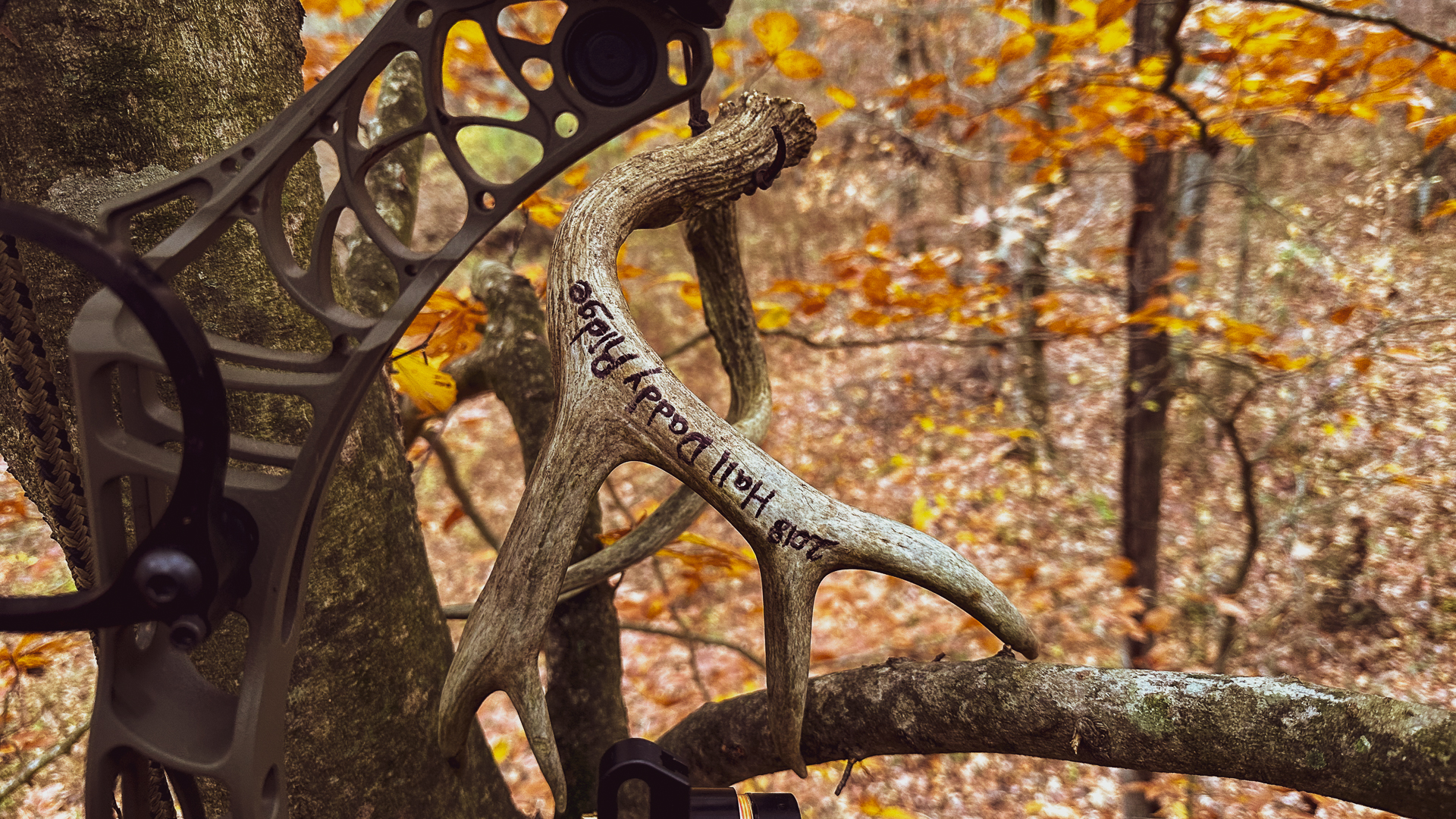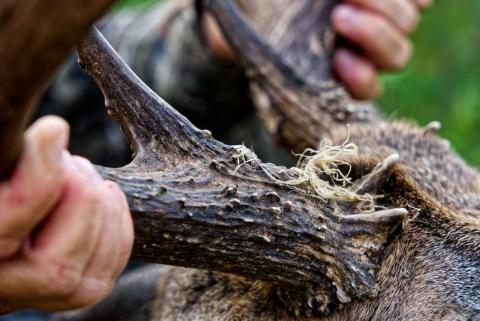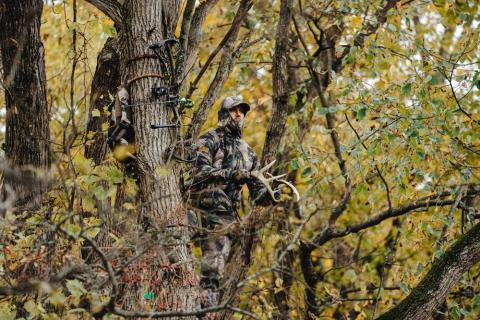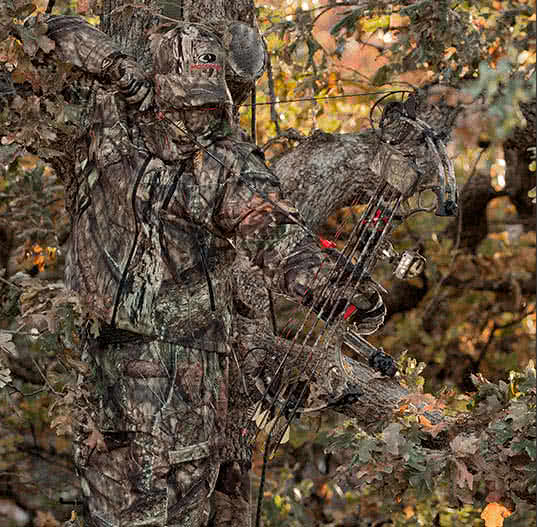Jessi Cole Walters
In 1990, Mossy Oak had four iconic patterns under their belt. Hill Country and Bottomland, then Greenleaf, then Treestand. These original legacy patterns (except Hill Country) have stayed in production and rotation since their conception, but the fifth pattern, Full Foliage, which was released in 1990, is making a comeback 36 years after its initial release.

Hill Country and Bottomland was released in 1986, Greenleaf in '87, Treestand in '89, and Full Foliage in 1990.
Toxey Haas’s heritage camo patterns were all built off the base of Bottomland—that iconic pattern tying all of the original camouflages together and making them instantly recognizable, even almost 40 years later, as a Mossy Oak pattern. Greenleaf added a layer of small green Water Oak leaves to “green up” the Bottomland pattern for spring and early bow season hunting.
Treestand layered two gnarled and knotty limbs on top of the painted tree bark pattern; these two limbs repeat throughout the pattern, enabling wearers to blend in when bowhunting off the ground. It was also adopted by many flooded timber duck hunters.
A few years later, though, Toxey and the team wanted an even greener pattern to really capture the big leaves, undeniably spring spirit. He says, “Greenleaf was not intended to be a sure-‘nough green-up. It was more meant for middle season.”
This new fully greened-up pattern, aptly named Full Foliage, was especially designed with the mix-and-match camo concept in mind; hunters could wear Bottomland on their bottom half and Full Foliage on top when turkey hunting with their back against a tree. Full Foliage also worked well for those early season bowhunters wanting to break up their form and blend into the foliage of the trees.

Full Foliage represents that "spring awakening" green-up time in the turkey woods.
When developing new patterns, seasonally correct field testing was (and still remains) crucial. The pattern would be developed a few months ahead of the season it was intended for and during the season, and for this case the optimal full foliage window, the patterns and colorways were taken directly out into the woods for color testing and ensuring effectiveness. If the pattern wasn’t completed during its intended window of optimal relevance, then a year would have to go by before they could begin perfecting it again.
Toxey would often cut elements he liked out of fabric, like limbs and leaves, and pin them on top of the Bottomland fabric to get a look and idea of what the pattern could look like. He says for Full Foliage, the tonality of the colors and getting that green just right was their main priority with the pattern. He also used the two limbs from Treestand in the background of Full Foliage to really increase the dynamic nature of the new camouflage pattern.
At this point in the camouflage market, other brands weren’t offering as many options as Mossy Oak. Toxey says the addition of Full Foliage to the Mossy Oak pattern arsenal “helped position us as the premier specialty camo because we had so many different options.”

Toxey wearing mix-and-match Mossy Oak patterns with Full Foliage on top and Treestand on bottom.
But when digital sticks and leaves camo began hitting the market a few years later, Full Foliage fell a bit by the wayside. “Some of the things we did never got their day in court,” Toxey says.
Today, the popularity for Full Foliage is high among Mossy Oak fans and friends and collectors of “vintage” camo. Full Foliage wasn’t produced as much as some of the other legacy patterns, making it harder to find in resale markets; this, of course, increased its collectability value.
When Daniel and Neill Haas, Toxey’s sons, began discussions to bring back Full Foliage, there were no digital files to pull from. The file was so old that the pattern had to be redrawn; longtime Production Designer Larry Moore found the separations of the pattern on an old CD; that was all they had to go by.
And all the fabrics and clothes they had to go by were faded and worn, making it difficult to match the original vibrancy of the pattern. Moore and team didn’t want the pattern re-release to look too shiny and new compared to what folks had come to love and prize in their closets.
After a likely deja-vu like process to get the colors and tone right in the redrawn Full Foliage pattern, the Mossy Oak team was happy with the recreation and the plans were made to announce and re-release the iconic pattern at the 2025 NWTF Convention.
To the original team that released Full Foliage 36 years ago, seeing the demand and excitement for the pattern after all this time is sure to bring up memories.
Larry Moore, whose pattern design career at Mossy Oak is exactly as old as Full Foliage, 36 years, says, "Anytime I see the old patterns, it makes me feel good. The nostalgia of those older patterns--there's sure something special about the way they look and the way they feel."
When Toxey Haas was asked how he would feel seeing the pattern back on the shelves at NWTF this year, he says "It takes me back to time in my life. I remember so many people from that era--right off the bat I think about Bob Dixon. He was right square in the middle of all that." The people and that time in his life, he emphasizes, is what immediately draws him back in.
He continues on to say the re-release of Full Foliage gives him "gratitude for where we are today."














